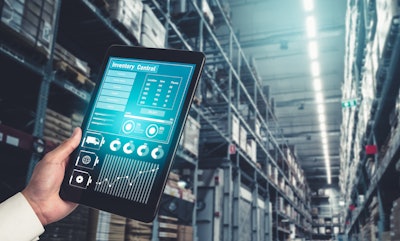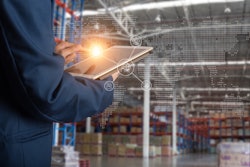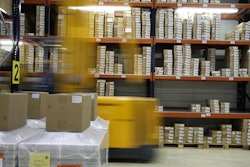
In an era where efficiency is paramount, the logistics and warehousing industry is undergoing a profound transformation, propelled by the advent of the Internet of Things (IoT). This technological revolution is not just about connecting devices; it's about harnessing their collective power to create systems that can operate autonomously, adapting to changing needs in real-time. By integrating advanced IoT technologies, warehousing and logistics operations are evolving into dynamic environments where processes from inventory management to order fulfillment are becoming more self-reliant and intelligent.
The evolution of IoT in warehousing and logistics
The incorporation of IoT in warehousing and logistics is a relatively recent development that has rapidly transformed these industries. Initially, warehouses operated on manual systems, with minimal technological intervention, focused primarily on basic inventory management and goods storage. The rise of e-commerce and increased consumer demands necessitated a shift towards more efficient, technology-driven solutions. IoT emerged as a game-changer, introducing capabilities like real-time inventory tracking, automated guided vehicles, and advanced analytics. Today, IoT applications in warehousing include drones for easy item scanning and location monitoring, blockchain for proactive inventory tracking, and smart warehouse management systems (WMS) for integrated operations management. This evolution signifies a critical shift from traditional, labor-intensive methods to sophisticated, interconnected, and automated processes, reshaping the landscape of warehousing and logistics toward a more agile and data-driven future.
Key components of an IoT-driven autonomous systems
Autonomous robot.: A significant innovation in the supply chain, autonomous sorting robots are key to enhancing accuracy and flexibility in production lines. Enabled by IoT connectivity, they can collaborate with other robots and endpoints, using sensors and cameras to navigate their environment, classify packages, and streamline the movement of goods. This technology greatly improves the efficiency of handling and sorting items in warehouses.
Driverless transport systems (DTS). These systems are crucial for managing the flow of raw materials over longer distances, offering flexibility and maintaining site efficiency. Unlike autonomous robots that are self-directed, DTS vehicles follow a pre-programmed route. They are often used for transporting heavier loads like pallets and play a vital role in optimizing the movement of goods within the warehouse environment.
Image recognition systems. These systems enhance product quality and support production line employees by recognizing components and guiding their actions. They help workers identify and collect the correct components in the right order, thus reducing errors and improving overall efficiency. Implemented as part of an IoT deployment, image recognition systems offer a failsafe mechanism, increasing product and process quality, and thereby enhancing customer satisfaction and employee well-being.
Sensors, gateways, and routers. These components form the backbone of IoT connectivity in smart warehousing. Sensors track and monitor various aspects of the warehouse environment, gateways facilitate communication between different devices and systems, and routers ensure seamless data transfer. Together, they enable faster decision-making and optimize warehouse processes, leading to significant improvements in productivity and cost savings.
Each of these components plays a critical role in transforming warehousing and logistics into more autonomous, efficient, and responsive operations. By leveraging these connectivity-driven technologies, businesses can achieve significant advancements in their warehousing and logistical capabilities.
Impact on efficiency and productivity
The implementation of IoT in warehousing and logistics has led to a substantial enhancement in operational efficiency and productivity. IoT devices enable real-time package identification and tracking, improving the accuracy and speed of inventory management and shipping processes. This significantly reduces the time spent in locating and processing items, leading to time savings and cost reduction.
Furthermore, IoT-driven systems facilitate effective data transmission and ensure the integrity of products by maintaining optimal storage conditions. This minimizes the risk of spoilage or damage, especially in the handling of perishable goods. Route optimization, powered by machine learning and GPS, also plays a crucial role in efficiency. By optimizing travel routes and delivery schedules, IoT contributes to fuel savings and reduces the environmental impact of transportation.
Additionally, IoT enhances communication practices within the logistics chain. Replacing traditional methods like phone and fax with real-time digital interaction, IoT streamlines the entire shipping process. This leads to better resource allocation, reduced transportation costs, and overall more streamlined operations. As a result, businesses can expect more efficient and cost-effective logistics operations, which in turn translates into higher customer satisfaction and improved profitability.
Complex challenges and considerations
Implementing IoT in warehousing and logistics presents complex challenges, such as the integration of diverse systems across various stakeholders like manufacturers, suppliers, and retailers. This process necessitates standardization of data formats, protocols, and resolving compatibility issues between new IoT technologies and legacy systems. Further, the cost and organizational alignment required for IoT adaptation are significant, especially when coordinating multiple warehouses and channels.
Management conflicts often arise between operational and IT teams, with operational managers hesitant to frequently update technology and IT professionals advocating for the latest advancements. Additionally, there's a skills gap in the industry, requiring professionals adept in network protocols, device connectivity, cybersecurity, and data management. Training for existing staff and recruiting skilled workers are essential for effective IoT operation.
Lastly, the management and analysis of the vast amount of data generated by IoT pose a significant challenge. Data collected from sensors must be integrated with traditional ERP systems and offline processes, demanding robust data management strategies. Effective data integration, governance, and quality control are crucial for making informed decisions and maximizing the value of IoT in logistics.
Real-world examples
Advanced inventory tracking system. A key example in the realm of warehousing involves the implementation of IoT-based inventory tracking systems. These systems utilize connected sensors, enabling logistics managers to ensure safe product storage, instantly locate needed items, and significantly minimize human errors. This technology has proven to be a game-changer in asset tracking and warehouse management, exemplifying how IoT can streamline operations and enhance inventory control.
Predictive analytics in warehouse management. Predictive analytics systems have been instrumental in transforming warehouse management and supply chain planning. These systems aid in determining the most efficient delivery routes, identifying early signs of equipment wear, and notifying staff about maintenance needs. This approach not only increases warehouse productivity but also significantly reduces delivery costs. The use of such systems in large-scale logistics operations serves as a prime example of the efficacy of IoT in predictive analytics and smart delivery planning.
These case studies highlight the tangible benefits and transformative potential of IoT in autonomous warehousing and logistics, demonstrating how these technologies contribute to improved efficiency, reduced costs, and enhanced operational capabilities.
Future outlook
The integration of IoT in warehousing and logistics has ushered in a new era of efficiency, accuracy, and cost-effectiveness. From advanced inventory tracking to predictive analytics and location management, IoT is redefining operational processes. Looking ahead, we can expect continued advancements in IoT, further automating and optimizing these sectors. The future promises even more sophisticated, interconnected systems, driving the warehousing and logistics industries towards unprecedented levels of precision and efficiency.



















